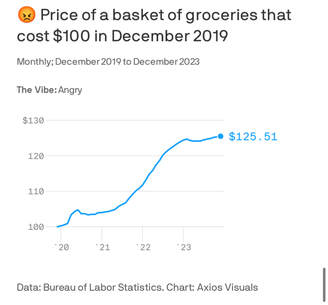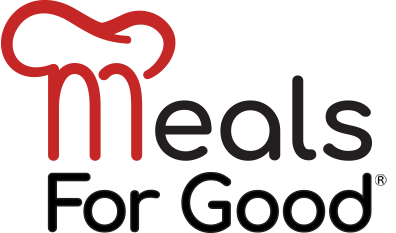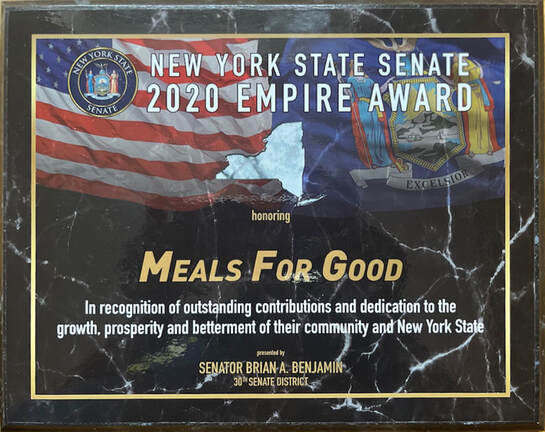January, 2024: Inflation at the supermarket is too high
Inflation may be better at the gas pump but the cost of food at the grocery store is still too high. People who are poor are not receiving enough money from the federal government to buy healthy, fresh food. People who do not receive SNAP (food stamps) because of immigration status or because minimum wage is slightly too high need help in buying food as well.
Food insecurity is not just about being able to have enough food, it's being able to eat enough healthier food. Food that is high in fat, sugar and salt and foods that are ultra-processed tend to be less expensive than fresh fruits and vegetables, leaner meats, and healthier oils.
We spend so much in healthcare due to diet related diseases such as diabetes, high blood pressure, heart disease, obesity and others. If everyone were able to eat better, then the cost of caring for people with diet related diseases would be significantly reduced too.
If food is medicine, then everyone needs to be able to afford to eat healthy.
Food insecurity is not just about being able to have enough food, it's being able to eat enough healthier food. Food that is high in fat, sugar and salt and foods that are ultra-processed tend to be less expensive than fresh fruits and vegetables, leaner meats, and healthier oils.
We spend so much in healthcare due to diet related diseases such as diabetes, high blood pressure, heart disease, obesity and others. If everyone were able to eat better, then the cost of caring for people with diet related diseases would be significantly reduced too.
If food is medicine, then everyone needs to be able to afford to eat healthy.
OCTOBER 2023: THE FOUR USDA FOOD DIETS - HOW LOW CAN YOU GO?
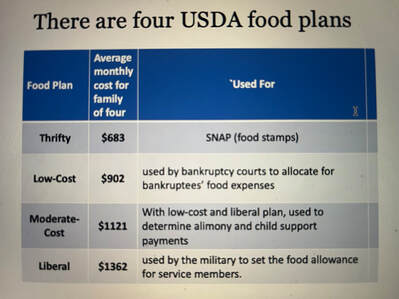
The USDA has four food plans; each estimates the costs of a nutritionally adequate diet across different price points. The photo on your left shows the average monthly costs for a family of four in 2023.
The Thrifty food plan is the lowest cost of the four and is used only for SNAP allowances.
SNAP benefits average about $6.10 per person per day in 2023. Believe it or not, that average daily benefit is about $1.35 higher per person per day this year than it would have been because of the recent adjustment to the Thrifty Food Plan.
Still, people who are poor should not be penalized. They should at least rate the diet that is good enough for bankruptcy and divorce courts!
The Thrifty food plan is the lowest cost of the four and is used only for SNAP allowances.
SNAP benefits average about $6.10 per person per day in 2023. Believe it or not, that average daily benefit is about $1.35 higher per person per day this year than it would have been because of the recent adjustment to the Thrifty Food Plan.
Still, people who are poor should not be penalized. They should at least rate the diet that is good enough for bankruptcy and divorce courts!
JUNE 2023: FARM BILL NOW IN CONGRESS
Since the 1930s America has been linking issues of food insecurity with support for farming under what we now call The Farm Bill, an omnibus that comes up for its 5-year renewal in Congress this September. It’s a noble objective: everyone should have the opportunity to eat farm fresh food while supporting the farmers that raise and cultivate that food. The Supplemental Nutrition Assistance Program (SNAP), formerly known as food stamps, is now the largest part of the Farm bill. It is not politic to say that SNAP not only benefits those who are food insecure and those who grow the food, it also benefits the food processors, the food distributors, and the grocery stores, making it an essential support for our food economy.
The USDA has four food plans; each estimates the costs of a nutritionally adequate diet across different price points. The Thrifty food plan is the lowest cost of the four and is used only for SNAP allowances. SNAP benefits will average about $6.10 per person per day in 2023. Believe it or not, that average daily benefit is about $1.35 higher per person per day this year than it would have been because of a recent adjustment to the Thrifty Food Plan. And yet, once again the Congress will argue over how much food money is appropriate to aid low-income families and individuals.
The USDA has four food plans; each estimates the costs of a nutritionally adequate diet across different price points. The Thrifty food plan is the lowest cost of the four and is used only for SNAP allowances. SNAP benefits will average about $6.10 per person per day in 2023. Believe it or not, that average daily benefit is about $1.35 higher per person per day this year than it would have been because of a recent adjustment to the Thrifty Food Plan. And yet, once again the Congress will argue over how much food money is appropriate to aid low-income families and individuals.
April 2023: Food INSECURITY RISES
The USDA has four food plans; each supposedly estimates the costs of a nutritionally adequate diet across different price points. The Thrifty food plan is the lowest cost of the four and is used only for SNAP (food stamp) allowances.
SNAP benefits average about $6.10 per person per day in 2023.
The reality of trying to survive on SNAP benefits alone, particularly with food inflation so high, makes clear that it's simply not enough to keep Americans in poverty from going hungry. The Center on Budget and Policy Priorities states that 78% of people on SNAP use up their allotment in the first two weeks of the month. What do families do after that? Many adults skip meals. Meanwhile, diet-related diseases like Diabetes, Heart Disease, High Blood Pressure and others continue to increase.
SNAP benefits average about $6.10 per person per day in 2023.
The reality of trying to survive on SNAP benefits alone, particularly with food inflation so high, makes clear that it's simply not enough to keep Americans in poverty from going hungry. The Center on Budget and Policy Priorities states that 78% of people on SNAP use up their allotment in the first two weeks of the month. What do families do after that? Many adults skip meals. Meanwhile, diet-related diseases like Diabetes, Heart Disease, High Blood Pressure and others continue to increase.
February 2023: THE FOOD STAMP DEBATE
In 2012, Senator Cory Booker (then Mayor of Newark, New Jersey) joined the Food Stamp Challenge. This was an effort to show how difficult (or easy) it was to buy and cook healthy meals using only the money allowed by the USDA SNAP (Supplemental Nutrition Assistance Program, formerly known as food stamps) program. His challenge was to live for a week on the same $4.00 per day that New Jersey recipients received. Cory Booker bought wisely: canned beans and fresh potatoes made up the bulk of his purchases. But he couldn’t afford his morning coffee, and after 6 days of eating the same foods day in and day out, (and even eating a potato he burned because he could not afford to buy another), he understood how difficult it is to be so financially limited.
The Farm Bill is up for its five-year renewal in Congress. SNAP – the Supplemental Nutrition Act Program, formally known as Food Stamps, is by far, the costliest of the nutrition programs and the debate seems to be between those who think we give too much, and those who think we do not give enough. To be clear, I’m in the latter camp. After all, when we talk about SNAP, we are talking about helping people afford food only. Not diapers, not detergent, not liquor. Just food.
In 2015, Gwyneth Paltrow famously caused a raucous when she entered the Food Stamp Challenge and bought only fresh, healthy food, immediately over-spending her allowance. It begs the question: are we asking people who are poor to live by a different standard? The answer, sadly, is ‘kind of’. Because we are expecting people to eat healthy while they live on less, even though we know that ‘healthy’ is often most expensive. Less costly food is often canned, bagged, high in sodium, sugar, and fat. Yet we feign surprise when people who are poor are plagued with diet-related illnesses such as diabetes, hypertension, and obesity.
In March 2020, in response to effects of the public health emergency caused by COVID-19, additional emergency benefits were allocated to all those receiving SNAP. Although it has been revised over time, all households receiving SNAP benefits were given at least an additional $95 each month. On March 1, 2023, this SNAP benefit ends. With inflation at the grocery store higher than ever, the loss of this benefit will be strongly felt.
The Farm Bill is up for its five-year renewal in Congress. SNAP – the Supplemental Nutrition Act Program, formally known as Food Stamps, is by far, the costliest of the nutrition programs and the debate seems to be between those who think we give too much, and those who think we do not give enough. To be clear, I’m in the latter camp. After all, when we talk about SNAP, we are talking about helping people afford food only. Not diapers, not detergent, not liquor. Just food.
In 2015, Gwyneth Paltrow famously caused a raucous when she entered the Food Stamp Challenge and bought only fresh, healthy food, immediately over-spending her allowance. It begs the question: are we asking people who are poor to live by a different standard? The answer, sadly, is ‘kind of’. Because we are expecting people to eat healthy while they live on less, even though we know that ‘healthy’ is often most expensive. Less costly food is often canned, bagged, high in sodium, sugar, and fat. Yet we feign surprise when people who are poor are plagued with diet-related illnesses such as diabetes, hypertension, and obesity.
In March 2020, in response to effects of the public health emergency caused by COVID-19, additional emergency benefits were allocated to all those receiving SNAP. Although it has been revised over time, all households receiving SNAP benefits were given at least an additional $95 each month. On March 1, 2023, this SNAP benefit ends. With inflation at the grocery store higher than ever, the loss of this benefit will be strongly felt.
November, 2022 UPDATE
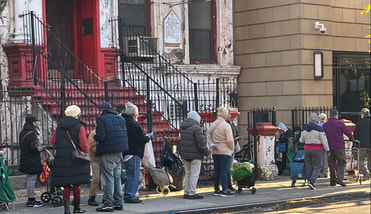
Holiday time is upon us, and pantry lines are longer than ever. But so many pantries are underfunded, and unable to distribute fresh vegetables such as kale, spinach, lettuce, even onions and potatoes or fresh fruit such as apples and pears, and very, very few can afford fresh eggs. These are all healthy, important additions to holiday meals. So Meals For Good, Inc has teamed up with Project People Foundation to reach more underfunded churches in Harlem and help them to distribute fresh produce. And we are not stopping there! We are continuing this work together through the bleak winter months to ensure that people are able to eat the fresh foods they need to stay healthy! Please help us help our neighbors by making a tax deductible donation today. All donation go towards food, not salaries.
September, 2022 UPDATE
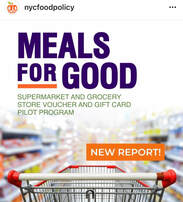
It’s been a busy summer. Some of the food pantries had a late start to their annual City contracts so in August we supplied over 3000 pounds of fresh vegetables and fruit to underfunded pantries in Harlem. We also gave extra incentive grants for pantries to try new produce items, allowing food pantries to offer something different for customers, without spending their limited funds on trial and error – and it’s working! For example, many pantries have seen an increase in Asian families, and bok choy has been a great addition to the usual pantry bag – not only for those familiar with the greens, but when pantries gave taste tests, bok choy had to be reordered it was so popular!
But the big news is, over the last year, we have been trying out a new way to help people obtain the groceries they need and want: we have been supplying community based organizations in East Harlem with vouchers for local, independently owned supermarkets, and they, in turn, have been issuing between $70-100 worth of vouchers to each family in need. This has been incredibly successful effort: Redemption rates have ranged from 87-97% depending on the trial. We feel that this gives families the respect and the agency to choose their own foods – often fresh foods that are too expensive to buy without additional financial support. Many of these families do not qualify for SNAP (food stamps) because of immigration status or because their incomes are slightly more than the poverty threshold.
Importantly, we continue to increase our volume. Last year we distributed $25,000 worth of vouchers for local supermarkets to families in East Harlem and the South Bronx. This year we increased our distribution to $35,000 so far and the year isn’t over yet. Hunter College's Food Policy Center analyzed what people bought with the first iteration and they are currently working on a new set. Data shows that when given the chance, people who are food insecure purchase fruits, vegetables, meats, eggs, and kitchen staples - just what people need to make healthy meals for their families. You can read the manuscript here: https://www.nycfoodpolicy.org/wp-content/uploads/2022/06/Meals-for-Good-Grocery-Store-Incentive-Program.pdf
But the big news is, over the last year, we have been trying out a new way to help people obtain the groceries they need and want: we have been supplying community based organizations in East Harlem with vouchers for local, independently owned supermarkets, and they, in turn, have been issuing between $70-100 worth of vouchers to each family in need. This has been incredibly successful effort: Redemption rates have ranged from 87-97% depending on the trial. We feel that this gives families the respect and the agency to choose their own foods – often fresh foods that are too expensive to buy without additional financial support. Many of these families do not qualify for SNAP (food stamps) because of immigration status or because their incomes are slightly more than the poverty threshold.
Importantly, we continue to increase our volume. Last year we distributed $25,000 worth of vouchers for local supermarkets to families in East Harlem and the South Bronx. This year we increased our distribution to $35,000 so far and the year isn’t over yet. Hunter College's Food Policy Center analyzed what people bought with the first iteration and they are currently working on a new set. Data shows that when given the chance, people who are food insecure purchase fruits, vegetables, meats, eggs, and kitchen staples - just what people need to make healthy meals for their families. You can read the manuscript here: https://www.nycfoodpolicy.org/wp-content/uploads/2022/06/Meals-for-Good-Grocery-Store-Incentive-Program.pdf
May, 2022 UPDATE
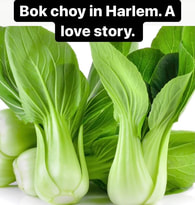
The people who wait on pantry lines can change, just as a neighborhood changes. In Harlem, for example, there has been a large migration of Asian families and many of the pantry foods offered, are not common to their palates. At Meals For Good, we have been giving extra grants - incentive grants we call them - to inspire pantry organizers to order fresh produce that might be strange to them, but common to the Asian community. Vegetables like Bok Choy or lettuces like Red Leaf are very popular, and it turns out, that when people get a chance to try these vegetables, it doesn't matter what culture they come from, the vegetables all taste delicious!. So if you see bok choy in a pantry bag, you'll know that this pantry is particularly engaged in supporting their clients, and getting to know their cultural tastes as well!
By the way, if you've never tried bok choy - just put them in boiling water for about a minute and then sauté with a little oil and salt (or soy sauce) and serve. Of course you can add seasonings - any that you think will work from hot sauce to Adobo to ginger and garlic.
By the way, if you've never tried bok choy - just put them in boiling water for about a minute and then sauté with a little oil and salt (or soy sauce) and serve. Of course you can add seasonings - any that you think will work from hot sauce to Adobo to ginger and garlic.
March, 2022 update
It's amazing how many food pantries distribute food without having a refrigerator. It means that the food they store is canned, boxed and bagged and any fresh food has to be delivered the day of or the day before the pantry is open for business. Since most pantries distribute food in the morning, this means that fresh foods are delivered the day before. Pantries are often organized the day before anyway, so fresh foods tend to be produce that can stay on your kitchen counter for days or weeks. Lots of potatoes, beets, carrots, onions and apples. Berries and ripe tomatoes, for example, can be difficult because they over ripen so quickly. And eggs! Think of all the people who need eggs and cannot get them in the pantries that don't have refrigerators! At Meals For Good, we try to help those pantries by delivering same day, or by supplying produce that is not quite ripe yet so it can sit out and maintain its integrity. For these pantries we have been delivering eggplants, lettuces like green leaf and romaine, tomatoes and yes, the more shelf stable items such as onions, red apples and cabbages. At the same time, we continue to lobby city agencies to help these underfunded pantries get the refrigerators they need and deserve. Finally, we plan to help these pantries get the eggs they need by delivering early same day, so that everyone waiting on the pantry line can get fresh eggs for Easter, Ramadan and Passover.
JANUARY, 2022 update
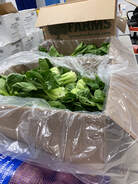
We were busy in January. Not only did we supply two pantries in Harlem with much needed fresh produce (from all local farmers), but we started to add incentives to try new produce like bok choi and spinach. Fresh produce is good for everyone, but smaller pantries do not have enough money to purchase the necessary produce, and they are often too small to receive additional foods from places like City Harvest. Additionally, families from different cultures, particularly those new to the United States, do no eat a lot of packaged food that is usually distributed. Well, the incentives were a big success! Not only were the new vegetables appreciated, but they were so popular, that both pantries ran out of them and reordered a larger quantity for the next week!
Fall/Winter 2021-2022 Update
November 18, 2021
Meals For Good is gearing up again to help our neighbors get through the holidays! We are helping to feed 200 families in shelters for Thanksgiving; supplying two pantries with fresh produce from local farmers so they can distribute more fruits and vegetables for the rest of the year; ensuring that seniors living in apartments receive the nourishment they ask for, and we are starting to work with schools to reach families during the holidays when schools are closed and children miss free breakfast and lunch. But stay tuned. As winter approaches it's January and February and March that are relentless and those less fortunate will find food even more scarce. Meals For Good is also focused on ensuring that people continue to get nutritious and culturally appropriate food throughout these winter months, helping to supply the healthy groceries they are missing.
SPRING/SUMMER 2021 UPDATE
Phew - NYC is opening up! This is great news for everyone, and we hope that Meals For Good will begin to partner with restaurants again in the fall.
Even so, the cost of food has risen significantly at the same time as unemployment continues to be high and the percentage of rent arears is rising. More households are having to cut down on the quantity and quality of their food consumption. Already the poorest American families spend more than one-third of their income on food.
Over this spring we have been attempting to reach very deep into the communities, particularly those that do not qualify for federal help. We have reached out to free fridges, particularly those mutual aid groups in Harlem and the South Bronx that distribute to many of the fridges in all give boroughs and have donated everything from eggs to herbs, from avocados to peaches.
Thanks to a grant from the Robin Hood Foundation, we are giving those people who are unable to receive SNAP (food stamps), agency over their own food by giving families and individuals vouchers for nearby supermarkets. Using different community groups to distribute these vouchers to their clients, we are helping families in a novel way, hoping to set the stage for a larger more comprehensive initiative.
And as always, we are continuing to support underfunded food pantries to help them buy more fresh produce. Thanks to a small grant from Grow NYC, we are servicing 3 new pantries plus La Morada with local produce.
Even so, the cost of food has risen significantly at the same time as unemployment continues to be high and the percentage of rent arears is rising. More households are having to cut down on the quantity and quality of their food consumption. Already the poorest American families spend more than one-third of their income on food.
Over this spring we have been attempting to reach very deep into the communities, particularly those that do not qualify for federal help. We have reached out to free fridges, particularly those mutual aid groups in Harlem and the South Bronx that distribute to many of the fridges in all give boroughs and have donated everything from eggs to herbs, from avocados to peaches.
Thanks to a grant from the Robin Hood Foundation, we are giving those people who are unable to receive SNAP (food stamps), agency over their own food by giving families and individuals vouchers for nearby supermarkets. Using different community groups to distribute these vouchers to their clients, we are helping families in a novel way, hoping to set the stage for a larger more comprehensive initiative.
And as always, we are continuing to support underfunded food pantries to help them buy more fresh produce. Thanks to a small grant from Grow NYC, we are servicing 3 new pantries plus La Morada with local produce.
FALL/WINTER 2020-2021 UPDATE
Before COVID-19, Meals For Good partnered with restaurants that generously donated $0.25-$1.00 from one item on their menu for at least six months. Every time someone ordered that item, the money would be donated to local food pantries to buy fruits and vegetables from family farms. Local restaurants were helping their local communities with local produce.
Since COVID-19 arrived in early 2020, food insecurity has also doubled since the previous year, but the restaurant industry has also suffered immensely. Restaurants have been there for the community, now the community needs to be there for them. We are advocating for people to order out and eat out safely, whenever possible and we hope to partner with them again, when they are stronger and more secure.
Last year 1.2 million people in NYC were food insecure. Since COVID-19 that number has doubled. Like so many other groups, Meals For Good has pivoted. We still deliver healthy food to New Yorkers in need, but we are supported by individual donors. Read more about our recent work.
Since COVID-19 arrived in early 2020, food insecurity has also doubled since the previous year, but the restaurant industry has also suffered immensely. Restaurants have been there for the community, now the community needs to be there for them. We are advocating for people to order out and eat out safely, whenever possible and we hope to partner with them again, when they are stronger and more secure.
Last year 1.2 million people in NYC were food insecure. Since COVID-19 that number has doubled. Like so many other groups, Meals For Good has pivoted. We still deliver healthy food to New Yorkers in need, but we are supported by individual donors. Read more about our recent work.
DONATE
Food insecurity is at crisis levels in New York City, and our neighbors need our help now.
Please help us help farmers and families. Visit our Donate page to learn how to make a tax deductible donation.
Meals For Good is a 501c3 public charity.
Please help us help farmers and families. Visit our Donate page to learn how to make a tax deductible donation.
Meals For Good is a 501c3 public charity.
“Meals For Good” is a registered trademark of Meals For Good Inc. For more information, email [email protected]

